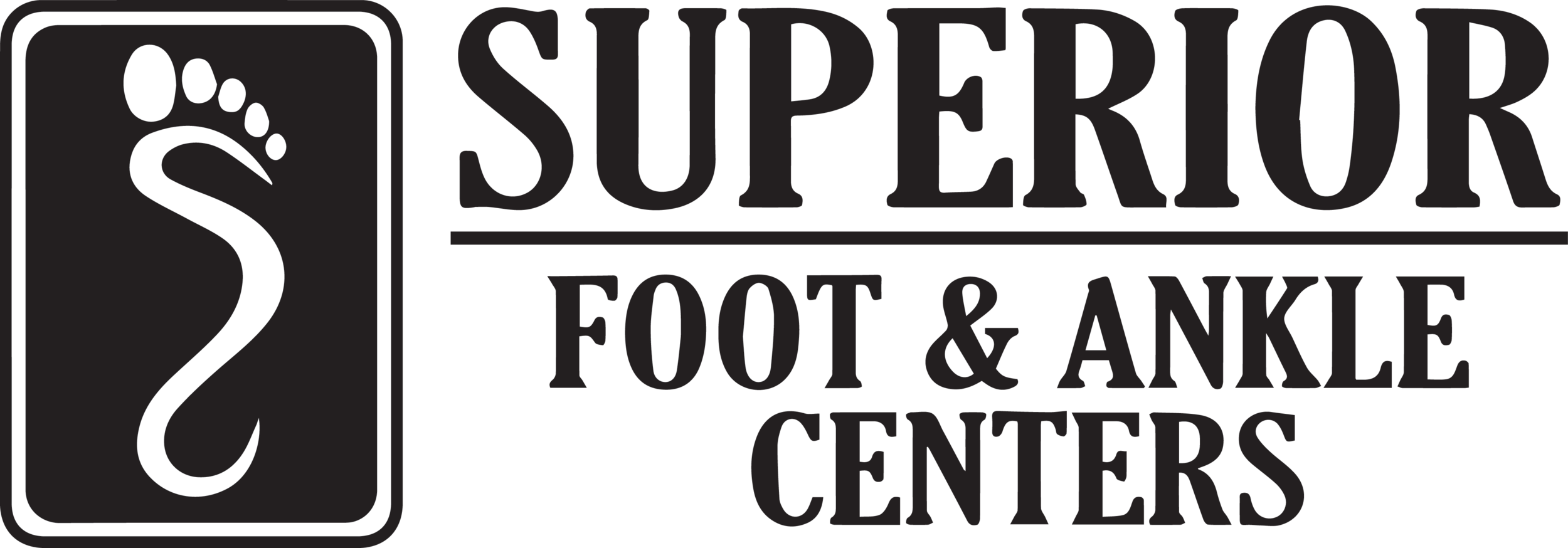FOOT TYPE IMPORTANT TO MUSCULOSKELETAL HEALTH
Humans come in innumerable shapes and sizes, applicable to so many parts of the human anatomy, side to side and top to bottom. And it’s down there at the bottom upon which the weight of the human body rests. Our feet are even entrusted with the task of propelling us through space, also known as walking. How well they do this job depends greatly on the person’s foot type, which is (predictably) primarily dependent on their genetics.
There are two basic categories of pathologic foot type: supinated or pronated. Apparently, only about 20 percent of the population has a normal foot type, one that is well-aligned and functions properly. The terms pronation and supination refer to the two basic motions (or positions) of the foot. One of these is where, very basically, the arch is higher. The latter term, pronated, is a lower arched foot. It is seen more frequently than the higher arched or supinated foot. Naturally, there are multiple variations on the theme of a pronated or supinated foot, human variability being what it is.
Determining one’s foot type can be determined by looking at your foot imprint after a shower. If there is minimal indentation at the arch then it indicates a pronated or lower arched foot. Conversely, if there is a large indentation, you have a more supinated or higher arched foot. With this latter foot type, you tend to put extra pressure on the outer part of your feet while walking or running. Because of their bony architecture, this type is prone to ankle instability and sprains.
If your arch flattens much when stepping down, you likely have a pronated foot. This is by far the most common deviation from the norm. With this foot type, arch pain is more common because the structures on the bottom of the arch are, in essence, being stretched excessively. Many variations on lower extremity anatomy can have this effect, a lowered arch type. Interestingly (to some) is that this pronation may describe a position of the foot or, alternatively, may refer to a motion, whereby the arch lowers too much during gait.
A host of different problems all result because of these two varieties of foot architecture and mechanics, each specific to that particular foot type. The motion of pronation, visualized as a lowering of the arch, makes one more prone to hammertoes and bunions, knee degeneration, and chronic low back pain. And those are only the headliners, some of the main acts in the litany of conditions resulting from these abnormalities in stance and gait. Pinched nerves in the feet (neuroma’s), shin splints, corns, chronic rearfoot joint instability, all are significantly more common in the pronated foot type. Although the causes for back pain are unfortunately too numerous to count, this is a relatively common one and can be treated well with conservative measures.
An evaluation of abnormal foot motion and position should be a key component of the treatment of anyone with nontraumatic musculoskeletal disease. A shockingly high percentage of “arthritic” joints are actually due to biomechanical issues. For example, a lowered arch may cause slightly higher pressures to the surface of the knee joint. This is of no consequence during the course of a single day. And leads to zero dysfunction when the individual is young and healthy, blood coursing, tissues strong, what may be summarized as the vitality of youth. And if we walked on surfaces of varying pitch and different terrain all our lives, this variability would not exaggerate anyone’s particular malalignment, each individual’s divergence from ‘normal.’
But modern society has built a flat world, without pitch or perturbation. It’s a concrete jungle, blacktop everywhere, with even surfaces throughout. Smooth sailing. This is obviously a really good thing and no one is arguing otherwise. But it has had the consequence of always putting our foot, with all the ligaments, the muscles and nerves, the all-important subtalar joint, and so many other structures, in the same position with each and every step. Frequently, the deviation is one that causes excess tissue stress to some tendon or joint, perhaps some area of skin, maybe a prominent bone, with time leading to tissue inflammation and pain.
The nagging discomfort attributed to “the years” or “Arthur-itis” is often the chronic stress of poor lower extremity alignment. If you have some slight variation from that perfectly functioning foot, it probably won’t be enough to cause pain when it happens for a week. And someone who pronates excessively, maybe just a little more, commonly won’t have notable musculoskeletal pain in their twenties or thirties. But problems are more likely when it recurs a hundred million times, the accumulated step count for a relatively common fifty year old. And that is a lot of repetition.
The elephant in the room here (did you know there was one?) is gravity. Never discount it, always present, exerting its slowly debilitating effects on anyone with misaligned body architecture, pulling our body down. Until we wear anti-gravity belts or live in space, free of gravity’s pull, it is a force of tremendous significance in any discussion of gait and human mechanics. This is a discussion important to the millions of Americans who suffer from chronic knee pain (and the associated surgeries with their costs and complications), which are a result of years of poor foot function and structure. Or to those with recurrent low back pain, common when afflicted with an improperly functioning support system.
This is a significant problem, leading to disability and pain, reducing the quality of life of millions of people. Yes, you heard it here first, another unseen epidemic….which basically just means it’s really common.
